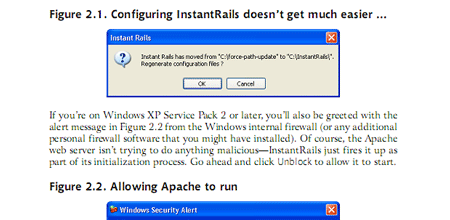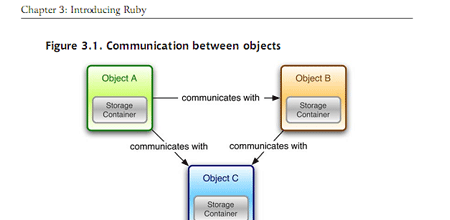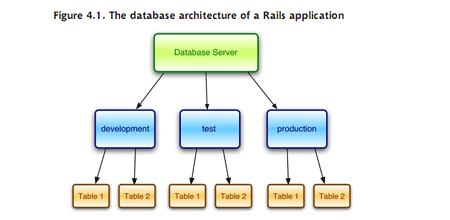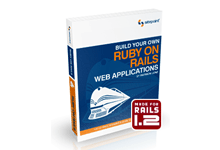Just thought I’d make a quick note that Sitepoint has released their Ruby on Rails book titled Build Your Own Ruby on Rails Web Applications up for free for the next 60 days. Some of you may remember that we reviewed the sample we were provided of this book, and it looked pretty promising. You can get it here.
Build Your Own RoR Web Applications
We’ve all seen it. Any time you visit Sitepoint, you’ve probably been hit with the ad for their Ruby on Rails book, titled “Build Your Own Ruby on Rails Web Applications”, by Patrick Lenz. Dubbed as “The Ultimate Beginners Guide to Ruby On Rails”, I figured the book was pretty good.
Still, I had no intent to learn RoR simply because I didn’t have time. Then came the opportunity for me to review the book for Sitepoint thanks to Reviewme, and I finally decided to take a look at the book and see what I could learn. For this review I’ll be using the first four chapters of the book, which are currently available as a free trial so you can get a taste of the book before you purchase. I’ll be breaking down the key points of each of the four chapters, with a final wrap-up at the end of the review.
Chapter 1: Introducing Ruby on Rails
The first chapter presents you with a lot of history on RoR. Since I knew so little prior to reading this, I learned a whole lot that I never understood about RoR. Rails was actually extracted from Basecamp, the lead project of 37Signals, and then released – something I would have never expected. The first chapter also touched on three principles that differentiate Rails from other development languages. They were:
- Convention of Configuration
- Don’t Repeat Yourself
- Agile Development
Each category was than expanded with a description of what exactly each principle meant in everyday language for us non-programmers. Finally the first chapter wraps up with a summary of what you can expect to get out of building your own sample application by following the instructions throughout the book, which lets you create a cloned site of Digg.

Chapter 2: Getting Started
The second chapter is all about getting your system setup and ready to develop your first RoR application. You install three key components, which the book outlines how to install depending on your Operating System. They are:
- The Ruby language interpreter
- The Ruby on Rails framework
- The MySQL database server
The book does a really good and straightforward job at describing the setup process. Windows, Mac OS X, and Linux are all covered. Towards the end of the chapter you learn how to setup “one directory setup to rule them all”. Finally, you’ll start up WEBrick, a small web server written in Ruby. While it has almost no functionality, you have started up your first Ruby Application.

Chapter 3: Introducing Ruby
Chapter 3 is a very informational chapter that outlines on what exactly Ruby is, and how a object orientated language works. It talks a lot about how Ruby objects communicate with each other, how to read and write Ruby code, standard output and core classes, running Ruby files, and control structures. You can learn a hell of a lot of information on Ruby just from this one chapter alone – it really does an excellent job going over all the different elements that make up the Ruby Language.

Chapter 4: Rails Revealed
The final chapter in the downloadable sample of “Build Your Own Ruby on Rails Web Applications” covers the Rails in Ruby on Rails. In it Patrick Lenz talks about using three different environments when developing in Ruby: development, test, and production. Next you learn how to setup the database for Rails – quick, easy, and straightforward. There is then a nice description of the MVC (model-view-controller) architecture that Ruby uses. This includes describing the differences between models, controllers, and views.
The chapter also contains information on generating code with Rails, and testing and debugging with RoR.
Summary
The first four chapters were very helpful in giving me (a non-programmer) a much better understanding on Ruby. It’s easier to understand why it should be looked at as the programming language of the future, because it helps make things so much easier and can greatly improve development time.
Reading these first four chapters really sparked my interest in Ruby, and it’s something I’d really like to try to learn more in depth in the summer months. The book itself does, in my opinion, a wonderful job by organizing the information in each chapter really nicely, and incorporating a lot of visual graphics to give you a much clearer understanding of the instructions and how things work in Ruby on Rails.
If haven’t read the book, you’re thinking about giving RoR a shot, or you just want to learn a little more about the programming language that is helping aid the boom in web based applications, this book is for you. With 163 pages just in the first four chapters, you are definitely getting your moneys worth by purchasing the book, which contains over 400 pages and digs a lot deeper than the intro chapters, and will help you put together your first application.
You can grab the first four chapters for free from here, or purchase the book at Sitepoint.
Note: The preceding was a paid review.
Molehill: Rich Text Editor for App
Molehill, creators of Tick, are looking for someone to build a rich text editor for a future web application. Details are below:
Molehill requires a rich text editor to be embedded in a Ruby on Rails application. Users will use the editor to format content and upon submission, HTML will be posted back to the web application. Molehill will provide all of the XHTML/CSS design as well as the Rails application programming and requires only the development of the editor.
You should know that we are looking for EXPERIENCE with Javascript primarily and especially with existing RTE editors (sample list: http://www.geniisoft.com/showcase.nsf/WebEditors). If you do not have experience with existing editors, it may be worth your time to evaluate before proposing building one from scratch. We are not opposed to building one from scratch but only if the appropriate research has been done. Please include anything you can to help us evaluate your ability to accomplish this project.
Contact Shaun at [email protected] if you are interested in this position.
Ruby On Rails – Short Intro
This is a guest contributed article by Srirangan of Programmers Assist.
A website that I visit pretty regularly, Sitepoint.com, today published an excellent introduction for Ruby On Rails (ROR). I, like many of the web developers, have been terribly curious about this almost “magical, no fuss” web development language, hence the time was perfect for Sitepoint to come out with the article.
Danny’s article on Sitepoint gave a brief introduction, but more-so stressed and emphasized on the “ease of development” that ROR brings along.
We’ve witnessed years of almost three decades of “hero worshipping” OOP techniques in software programming, and for a brief period with the onset of PHP5, we’ve witnessed the same in the web programming sector. Now with the introduction of ROR, this can only increase .. increase exponentially. 🙂
And it is a good thing, this OOP, it is good!
Now as my interest in ROR has surely surfaced, I visit Wikipedia to see what they have to say about this new magical Utopian web programming language. And I must say the blokes at Wikipedia have done an excellent job maintaining the entry for ROR. It is definitely a must read for anybody even remotely interested.
But what really caught my eye was the Philosophy Of Ruby On Rails. It adheres to the DRY principle, Dry – Don’t Repeat Yourself. Something I yearned for in PHP/Perl/ASP/Coldfusion, but like nirvana never could find it. If ROR can ever so remotely make DRY a practical principle, I will be the first to leave all and start ‘practicing the ROR religion’.
Another defining principle of ROR is – Convention Over Configuration. Which Wikipedia graciously explains as, and I quote:
“Convention Over Configuration” means that the programmer
only needs to define configuration which is unconventional. For example, if there is a Post class in model, the corresponding table in the database is posts, but if the table is unconventional (e.g. blogposts), it must be specified manually (set_table_name “blogposts”)”
Eh, sounds not too bad for a lazy inefficient web developer like myself, does it .. 😉
As I get all excited about ROR, I’ve finally decided to try it out on my little localhost tonight. Taking the plunge, metaphorically. I do hope ROR does live up to all this hype that its surrounded by and I’ve indulged in.

